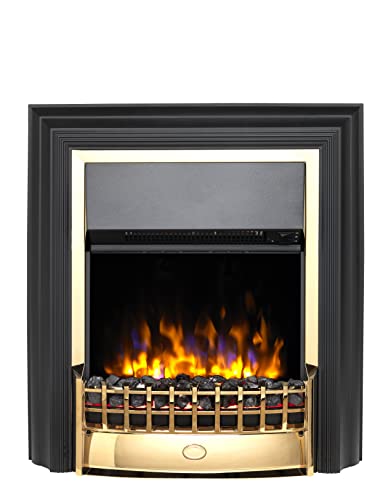
Fireplaces And Stoves
Add a review FollowOverview
-
Founded Date August 28, 2016
-
Sectors Manufacturing & Industrial
-
Posted Jobs 0
-
Viewed 99
Company Details
- Company Logo 10
-
Company Website
-
Official Email Address bea.motter59@im7.gemmasmith.co.uk
-
Company Head Office address Strickstrasse 78
-
Contact Number 10
Company Description
A Productive Rant About Fireplace
What Are Fireplace Accessories?
Fireplaces are an integral part of many homes that provide warmth and comfort throughout the day and at night. They also provide beauty and value to the property.
Homeowners can complete some of these projects regardless of whether your fireplace needs an overhaul or just a few basic repairs. Certain jobs that require gas service must be left to professionals.
The Hearth
The hearth is a non-combustible surface that covers the fireplace or wood-burning stove. It could be an elevated area or the foundation of the fireplace. The word “hearth” is commonly used to refer to the entirety of the fireplace, which includes the firebox, the raised mantel and floor and the chimney. It is nevertheless important to note that there are very specific fire safety guidelines regarding how the fireplace and its components should be constructed, so check with your local governing body for more information.
They can be made from bricks, stone or cement. They make a great focal point for any room. They are designed to guard against accidental fires that may be caused by stray embers or even logs. They also offer space for storing fireplace tools, wood and other supplies.
Archaeological research has revealed the importance of hearths as central to early human life. Many people believe that hearths supplied food, light, warmth, and protection.
Although a hearth can provide many advantages, it can also trigger serious health issues in the event that it is not properly maintained. Smoke exposure raises nitrogen levels in the blood which blocks red blood cells from delivering oxygen to tissues (methemoglobinemia). It can cause nausea, dizziness, and loss of consciousness when in high levels.
Traditionally, hearths were constructed of rock but they are nowadays constructed of brick or concrete and can be in different shapes and sizes. Some cooking fireplaces have hearths that are able to cover the entire wall, while others are smaller and solely decorative pieces that only cover the fireplace’s opening. The material used to build a fireplace can greatly influence its appearance, cost and heat resistance.
The Surround
A fireplace surround (also known as mantel) is the frame that sits above the hearth and adds to the atmosphere of the room. It’s not just aesthetically pleasing, but also functional because it keeps combustibles out from the fire and deflects heat back into the space. It can also serve as an area to store household items such as mirrors or paintings.
Based on the type of fireplace, there are several materials that can be used for the surround. Certain surrounds are not combustible, while others must meet the fire codes of the local and federal government in regards to clearance distances away from items that are combustible.
Some popular choices for surrounds include concrete, brick, and stone. Certain stone surrounds are carved using decorative features like bevels or bolection moulding. They may also feature cornices or plinths. These elements can give your home an elegant look that complements the style.
Another option is to use plaster. This material can be made with a mixture of sand and cement, and decorated to match any design. For example, a plaster surround can be a perfect fit for a Mission-style home.
The last popular choice for a fireplace surround is tile. This material is available in a variety of colors and patterns. It can be used as a decorative element to the surround or spread over the whole wall for an impressive focal feature. Tile is also a good choice for homes with modern or contemporary styles.
The surround is among the first things people notice upon entering a space. It is crucial to choose an item that will set the mood for your space and also to increase the value of your home.
The Firebox
The firebox is a space behind the fireplace opening, where a fire may be constructed and maintained. It is usually surrounded by some type of chimney that allows the smoke to escape through. Traditional structures usually burn wood, however some can also use gas like natural gas or propane.
The firebox is the area where the fire is created and it must be maintained in a way that ensures security and efficiency. The firebox is comprised of several important components. They include the grate, the fire poker, and the air damper.
It is crucial to regularly clean your fireplace. This includes maintaining the firebox in good order and its interior lining. Since it’s constantly exposed to extreme temperatures, the inside will be matted with soot and ash, which needs to be cleared. To accomplish this, use wire brushes or a scraper to get rid of the caked on soot and ash.
It’s also a great idea to make use of steel slag or stainless steel to line the inside of the firebox to ensure long-term durability and longevity. These metals are resistant to corrosion and will not get rusty. They also offer more uniform heat distribution and will last longer.
You can also enhance the visual appeal of your fireplace by adding decorative fire logs and lava stones. Some people also choose to use decorative modern glass as an alternative. Make sure the fireplace you choose to use is UL approved. This includes the fireplace, as well as any accessories and decorations you add to it.
The Burner
Burners are a popular method to add warmth and style to any room. They come in a variety of shapes and sizes that make it easy to find the perfect burner for your home. Some come with remotes, so you can control the flame from any place in the room. Fire burners can be used indoors and outdoors, since they are safe.
There are many types of burners. Each one has its own advantages and drawbacks. Some are more expensive, but they all have a myriad of benefits. Certain types of burners are safer than others, and can be used with or without a chimney. No matter what type of burner you select, make sure to follow the instructions in the user’s manual. This will ensure that the burner is installed correctly and in compliance with all local and state laws.
While burning wood is the most traditional method of enjoying a fireplace, it isn’t always the most practical. The smoke and soot produced by burning wood could be hazardous to you and your family. Ethanol burners produce water vapor, and extremely low levels of CO2, which is more sustainable.
A fireplace can also be beneficial in the occasion of an outage. In winter, trees can get weighed down by heavy snow and ice, causing them to fall, and power lines to fall below. Fireplaces can be used to cook and keep warm in the event that the power is cut off in your home. This is a great solution for homeowners who are prepared for the unexpected.
 The flu
The flu
The flue is an inner tunnel in the chimney that carries smoke and gases from your fireplace away from your home. It’s also an essential component of a safe and effective fire. A flue creates a wind which draws air into the fire. This lets the fuel burn completely and reduces smoke.
The draft action of the flue keeps the hot gases emitted from the fire from escaping into your home. Instead they are pushed out to cool. This controlled venting prevents carbon monoxide.
Check your chimney regularly for blockages and leaks. The flue pipe (a steel tube or duct that runs through the middle of the chimney) must be cleaned with special cleaning chemicals and equipment. This includes a metal brush, a drill with a masonry bit, as well as masking tape and an utility knife to remove any creosote or soot stuck to the walls of the flue pipe.
Shut off the flue when not using your fireplace in order to prevent conditioned air from escaping. It also prevents wind or rain from getting into the chimney and causing damage to your fireplace, wood stove or gas furnace.
The damper can be opened and closed by using a latch or a handle. It is located on the top of your fireplace near the flue pipe or tile. The damper is designed to keep a fireplace’s flue clear when a fire is burning. However it should be closed when the fireplace is not in use. This will save you energy costs.



